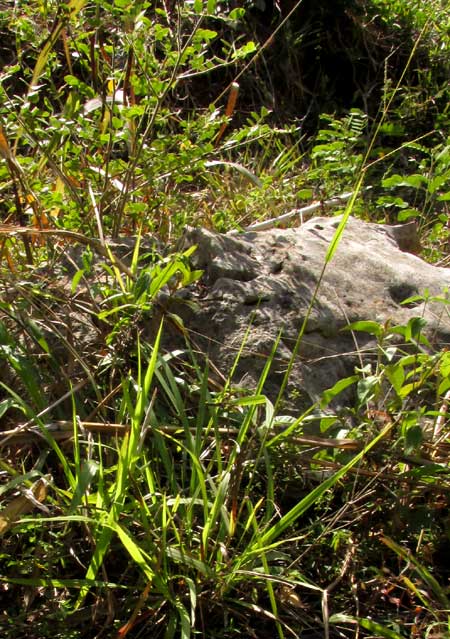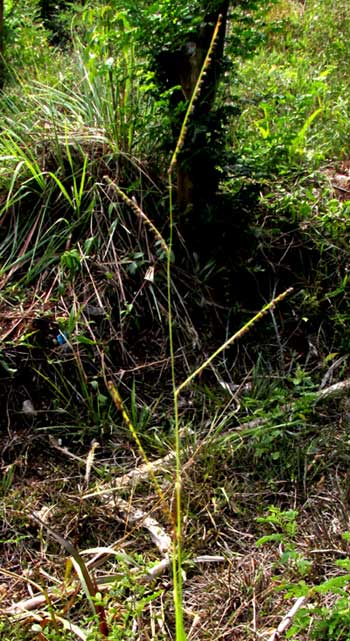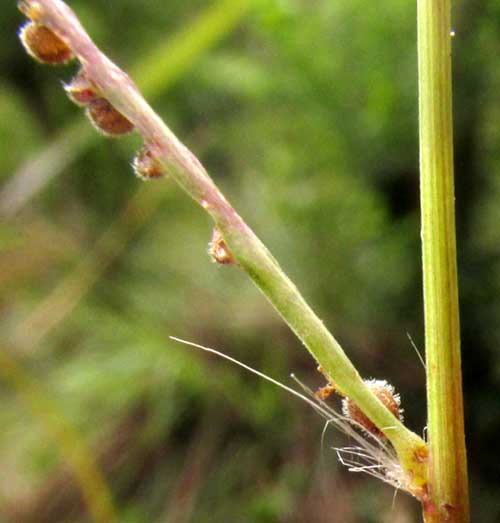Excerpts from Jim Conrad's
Naturalist Newsletter
from the March 22, 2019 Newsletter issued from Rancho Regensis north of Valladolid, Yucatán, MÉXICO;
elevation ~40m (~130 ft), N~20.876°, W~88.170°
CORAL PASPALUM
At the weedy edge of a semi-abandoned, irregularly watered papaya planting, beside a limestone rock, there grew a grass so enmeshed in the clutter of its disrupted environment that even looking at it you hardly saw it, as you can believe with the picture below:

In that image, notice that the grass's leaves in the picture's bottom half are robust and stiff, looking very perky for such a hot, dry time. At the picture's top, right, the grass's flowering head is so modest it's almost invisible. Below, the picture better shows that the flowering head consists of four narrow, spike-like branches well separated from one another:

The spike-like branches show more character if you look at them closely, as is done below:

The branch axis, or rachilla, becomes sinuous toward its tip. The rachilla itself is somewhat flattened, only about 0.7mm wide, and is tipped with a hairy spikelet. Lower down the rachilla, a few spikelets already have fallen off, leaving short, forward-pointing stems, or pedicels. Also, notice that all the spikelets arise on just one side of the rachilla. Among this grass's most telling field marks are two appearing below:

First, the spikelets are exceptionally tiny, only about 1mm long (1/32inch). Also, in that picture, notice that the spikelet stems, or pedicels, arise in pairs. It's also worthwhile to pay attention to the white tuft of hairs at the base of each branch, shown below:

These details and others pointed us to PASPALUM BLODGETTII, which the online Flora of North America for some reason calls Coral Paspalum. Paspalum blodgettii is granted an English name because it occurs in southern Florida as well as the Caribbean, the Yucatan Peninsula and Belize.
This is another species that normally blossoms during the rainy season, June through September, so apparently our March-blossoming plants appear because of occasional watering.